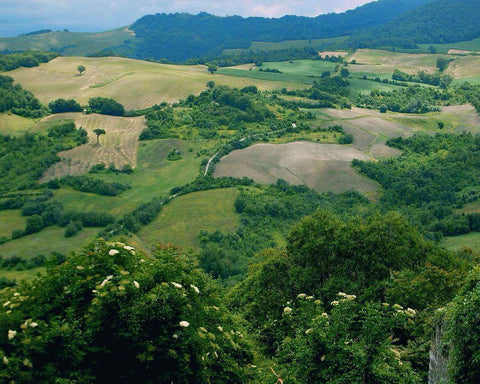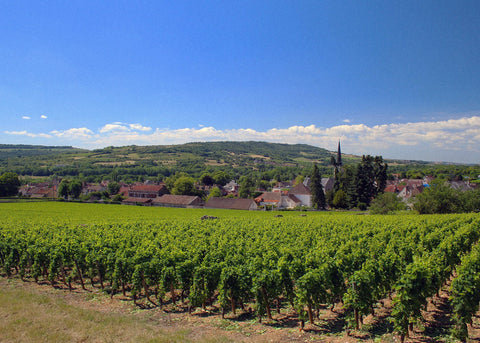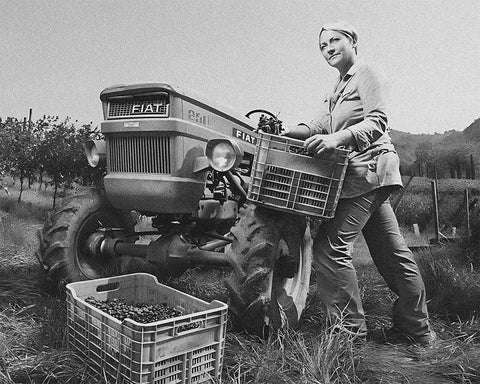Welcome back to the temple of all that is amber and has been sanctified on the glory of the #sacredskins. We continue our journey through the multi-faceted world of orange wines. At the risk of being repetitive, we’d like to first re-establish what we’re talking about and then dispel one myth. When speaking about orange wines, AKA skin contact white wines to be technically correct (or amber wines, as they like to call them in Georgia, some would say their earliest birthplace), we are speaking of both a millennia-old cultural tradition intrinsically linked with natural wine and a winemaking technique.
Although these wines have been exponentially gaining in popularity and are seen by many as the standard-bearers of natural wine, there is certainly no shortage of misconceptions about them. Before we dive into these myths, let’s clarify again what we mean by “orange wines”. The accepted wisdom, one also espoused by wine writer Simon J. Woolf, author of “Amber Revolution”, the first book on the subject, is that we are speaking of wines made from white varieties that have undergone any length of skin contact during fermentation. Now without further ado, let us dive into the intricacies of skin-contact wine.
1 – ORANGE WINES ARE ALL NATURAL
Mono-syllabic answer: nope! Short answer: The vast majority of them are but there’s no intrinsic relationship between being an orange wine and being a natural wine. Pretty much all orange wines which have become beloved household names in the past 10-15 years, some attaining cult status, in natural wine-friendly markets (such as Japan, US, or Nordic countries among others) are natural. Think of unicorn names like Radikon, Gravner, and Cantina Giardino. However, given the rising popularity of natural and orange wines, it was unavoidable that conventional and industrial operations sniffed a deal and jumped on the bandwagon. So it’s perfectly possible to have a skin-contact wine made from chemically treated grapes, fermented with bubblegum selected yeasts and, the epitome of shame and tragic paradox, humiliated by fining and filtration. Will it taste like anything even remotely close to a natural orange wine? Definitely not, but it will technically still be an orange wine.
2 – ORANGE WINE IS A RECENT FAD
Go tell that to the Georgians… Depending on how you define "recent" and "fad", it’s a fad that’s been around for maybe the last 6,000 years. Or at the very least, based on historical documents, at least the past 300 years. All white wines saw differing periods of skin contact in Georgia since time immemorial, a tradition so intertwined with the country’s soul that it survived the armageddon of industrial wine production during the Soviet regime. Across all of Italy, but in almost all other traditional wine-producing countries, white wines were always made with skin contact both in the pre-war period and more or less up until the late ’70s, when massive chemical use started to become mainstream both in the vineyard and the cellar.
3 – ORANGE WINES ARE ALL OR MOSTLY MADE IN AMPHORAE
It’s easy to see why some would hold this belief, as Gravner is one of the most beloved and well-known vignerons and Georgian wines are becoming more and more popular in restaurants and wine bars everywhere. The vessel used for fermentation and elevage is actually an independent variable and, although you do find many orange wines made in amphorae, there are just as many if not more made in large wood, like Friuli legends Radikon and Princic, fiberglass, like Lammidia, or steel tanks.
4 – MACERATION = FLATTENING OF TERROIR AND GRAPE
It’s a favorite trope of reactionary somms and plastic-lovers: “skin contact numbs down terroir and the aromas of the grape.” The best answer to this nonsense comes from Simon Woolf, who asks why, if skin contact has this numbing and homogenizing effect on whites, it is commonly accepted for reds. All reds are made through skin macerations, that’s where they get the color, and no one ever dreamt of arguing that the only “true” and territorial reds are made with no skin contact, which would mean “blanc de noir” by all means and purposes.
5 – ORANGE WINES ARE PREDOMINANTLY FROM ITALY’S FRIULI, SLOVENIA, AND GEORGIA
Partially true, meaning that many of the most visible and well-known orange wines in most markets will probably fall into these two categories. Having said that, and keeping in mind one of the above points, orange wines have been an integral part of winemaking all over Europe and in the past 20 years, they have seeped into the US and Australia, and even countries such as Japan (more on that undiscovered land in future installments…). Orange wines, therefore, can be said to be traditionally a staple of most or all of winemaking countries.
6 – INTENSITY OF COLOR = LENGTH OF MACERATION
Ok, so this is easily forgivable as well as understandable. The longer the wine macerates on the skins, rich with aromatic compounds, polyphenols, and just plain soul, the deeper and more intense the color will be. Yes… and no. While the time the must macerates with the skins during fermentation influences the hue that the wine will take, it is but one of many elements coming into play. More often than not, the type of grape, the age of the vines, or the soil they grow on can be much more influential than maceration length. Therefore you can have wines, such as Foradori’s Nosiola, that notwithstanding months of skin contact in Amphora are quite light and airy in color. On the other hand, there are wines, such as Sa Defenza’s Maistru, macerated for 24-48 hours, that shine with the copper-orange hue of a thousand dying Krypton suns.
In conclusion, regardless of any misconceptions, the rise of orange wines – natural orange wines, of course – cannot but be a triumph for true wines of terroir, spirit, and soul. It is not a fad, it's something that was always there and now more than ever it's here to stay. Until we meet again, all sing the praises of the Magna Mater Macerarum!
Author: Giovanni Segni ©










